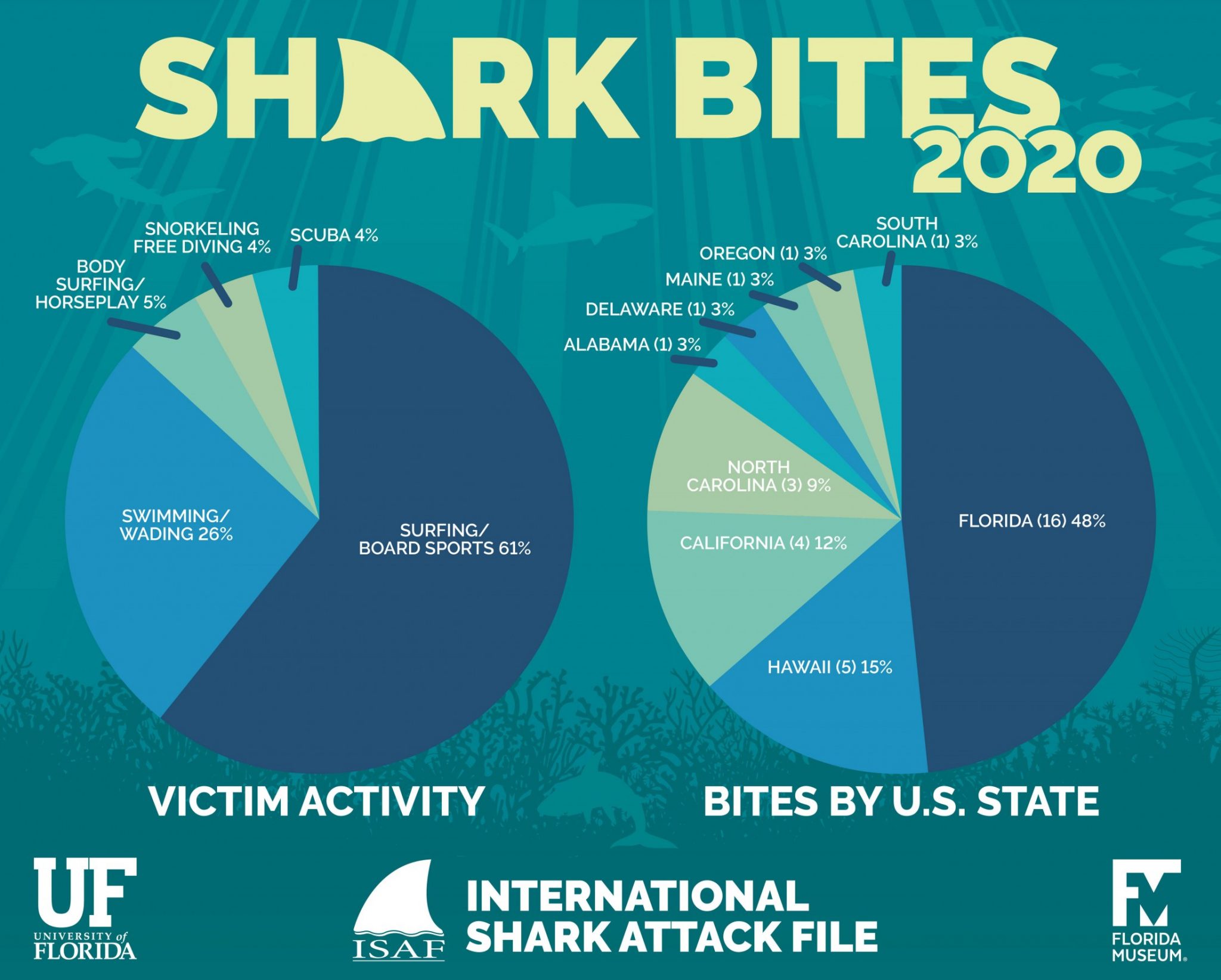Shark Attack Indonesia: The Real Story Behind The Bite
Shark attack Indonesia might sound like something out of a horror movie, but it's a real issue that has been gaining attention in recent years. From the crystal-clear waters of Bali to the remote islands of Papua, shark encounters have left both locals and tourists on edge. But before you start fearing every dip in the ocean, let's dive deeper into what's really happening beneath the waves. This isn't just about sharks; it's about understanding our role in their world and how we can coexist peacefully.
When people hear about shark attacks, their minds often jump to scenes from Jaws. But the reality is far less dramatic—and far more complicated. In Indonesia, the world's largest archipelago, shark attacks are relatively rare compared to other coastal nations. However, when they do happen, the stories spread like wildfire, fueling fear and misunderstanding. It's time to set the record straight.
So why are shark attacks in Indonesia suddenly becoming a topic of conversation? Is it because sharks are getting more aggressive, or are humans invading their territory? Stick around as we unpack the facts, debunk the myths, and offer practical tips for staying safe while enjoying Indonesia's breathtaking marine life.
- Cher Songs A Journey Through The Iconic Hits That Defined An Era
- Louisa Jacobson The Rising Star Shining Bright In Hollywood
Let's jump straight into the deep end with a quick overview of what you'll find in this article:
Table of Contents
- Introduction
- Shark Attack Statistics in Indonesia
- What Causes Shark Attacks?
- Meet the Predators: Shark Species in Indonesian Waters
- How to Prevent Shark Attacks
- Debunking Common Shark Attack Myths
- The Role of Environment in Shark Behavior
- Why Shark Conservation Matters
- Safety Tips for Swimmers and Surfers
- Conclusion
Shark Attack Statistics in Indonesia
Alright, let's cut through the hype and take a look at the numbers. Shark attacks in Indonesia are not as common as you might think. According to the International Shark Attack File (ISAF), Indonesia ranks relatively low in terms of shark attack frequency compared to places like Australia and the United States. But don't get too relaxed just yet; even one attack can have a massive impact on tourism and local communities.
Between 2010 and 2022, there were around 30 reported shark attacks in Indonesian waters, with only a handful being fatal. That’s a pretty small number when you consider how many people swim, surf, and dive in these waters every year. The chances of getting attacked by a shark are slimmer than winning the lottery—or maybe even finding a decent parking spot in Jakarta.
- Vanessa Hudgens Nude A Deep Dive Into The Controversy Facts And Beyond
- Zendaya Challengers Whos Stepping Up To The Plate
Here's a breakdown of some key stats:
- Most shark attacks occur in Bali, Lombok, and Papua.
- White sharks, tiger sharks, and bull sharks are the usual culprits.
- Unprovoked attacks account for 70% of incidents.
Why the Numbers Matter
These statistics aren't just numbers; they tell a story. They show that while shark attacks do happen, they're extremely rare. Understanding the patterns and causes behind these incidents can help us make informed decisions and reduce the risk of future encounters.
What Causes Shark Attacks?
Now that we've got the stats out of the way, let's talk about the real question: why do sharks attack humans in the first place? Contrary to popular belief, sharks don't wake up in the morning thinking, "Who should I snack on today?" Most attacks are cases of mistaken identity or defensive behavior. Let me break it down for ya:
Mistaken Identity
Sharks rely heavily on their senses to navigate the ocean. When a surfer paddling on a board or a diver in a wetsuit looks like a seal from below, it can trigger curiosity—or worse, hunger. Sharks aren't exactly known for their table manners, so they might take a "test bite" to figure out what's going on. Yikes, right?
Defensive Behavior
Imagine someone walking into your house uninvited. You'd probably feel a bit threatened, right? Sharks feel the same way when divers or swimmers get too close to their territory. If they perceive a threat, they might lash out in self-defense. It's not personal—it's just survival instincts kicking in.
Human Activity
Let's not forget the role we play in this equation. Overfishing, pollution, and climate change are altering the natural balance of marine ecosystems. Sharks are losing their food sources and habitats, forcing them to venture closer to shore in search of sustenance. In other words, we're kinda invading their space.
Meet the Predators: Shark Species in Indonesian Waters
Before we go any further, let's introduce you to the main characters in this underwater drama. Indonesia is home to over 100 species of sharks, each with its own unique characteristics and behaviors. Here's a quick rundown of the big players:
White Shark
Also known as the great white, this guy gets all the press but isn't as scary as Hollywood makes him out to be. White sharks are migratory creatures that travel long distances in search of food. They're responsible for a significant number of attacks in Indonesian waters, but most are cases of mistaken identity.
Tiger Shark
Think of the tiger shark as the opportunistic cousin of the white shark. Known for their aggressive hunting style, tiger sharks will eat just about anything—fish, seals, even garbage. Their curious nature often gets them into trouble with humans.
Bull Shark
Don't mess with the bull shark. These bad boys are notorious for their unpredictable behavior and ability to survive in both saltwater and freshwater environments. They're often found near river mouths and estuaries, making them a potential threat to swimmers in those areas.
Here's a quick table to help you remember the facts:
| Species | Habitat | Behavior | Risk Level |
|---|---|---|---|
| White Shark | Open Ocean | Curious, Test Bites | High |
| Tiger Shark | Coastal Waters | Aggressive, Opportunistic | Medium |
| Bull Shark | River Mouths | Unpredictable | Very High |
How to Prevent Shark Attacks
Okay, so now that you know the who, what, and why of shark attacks, let's talk about how to stay safe. Prevention is key, folks. Here are some practical tips to keep you out of harm's way:
- Avoid swimming at dawn or dusk when sharks are most active.
- Stay away from schools of fish or areas where fishermen are throwing bait.
- Don't wear shiny jewelry or bright clothing that might attract sharks.
- Swim in groups and stick close to the shore.
- Pay attention to warning signs and listen to local advice.
Surfers, Take Note
Surfers are at higher risk of shark attacks simply because they spend more time in the water. If you're a surfer, consider using a shark deterrent device or wearing a wetsuit that mimics the appearance of a sea snake—a known shark deterrent.
Debunking Common Shark Attack Myths
Let's clear up some of the misconceptions surrounding shark attacks. Here are a few myths that need busting:
- Myth: Sharks are man-eaters. False. Most sharks aren't interested in humans as prey.
- Myth: If you see a shark, it's going to attack. Not necessarily. Sharks often swim close to humans without incident.
- Myth: Sharks attack because they're hungry. Sometimes, but often it's curiosity or defensive behavior.
The Role of Environment in Shark Behavior
Sharks don't live in a vacuum. Their behavior is influenced by a variety of environmental factors, including water temperature, food availability, and human activity. As climate change continues to warm the oceans, we may see changes in shark migration patterns and feeding habits. It's a complex web, and understanding it is crucial for coexisting peacefully with these magnificent creatures.
Climate Change and Sharks
Rising sea temperatures and ocean acidification are affecting shark populations worldwide. Some species are moving to cooler waters, while others are struggling to adapt. This shift in behavior could lead to more frequent encounters with humans in unexpected places.
Why Shark Conservation Matters
Sharks may not be the friendliest animals out there, but they play a vital role in maintaining healthy marine ecosystems. As apex predators, they help keep fish populations in check and ensure biodiversity. Without sharks, the entire food chain could collapse.
Unfortunately, shark populations are declining at an alarming rate due to overfishing, finning, and habitat destruction. It's up to us to protect these incredible creatures and preserve their place in the ocean.
Safety Tips for Swimmers and Surfers
Here's a quick recap of the most important safety tips to keep in mind:
- Check local shark activity before heading out.
- Swim during daylight hours and avoid murky water.
- Stay calm and move slowly if you spot a shark nearby.
- Carry a shark deterrent device if you're a frequent ocean-goer.
Conclusion
Shark attack Indonesia might sound scary, but the reality is that these incidents are rare and often preventable. By understanding the causes, taking precautions, and respecting the ocean, we can enjoy all that Indonesia's waters have to offer without living in fear.
So next time you hear about a shark attack, remember to keep things in perspective. Sharks aren't out to get us—they're just trying to survive in a rapidly changing world. Let's work together to protect them and their habitats for future generations.
Got any questions or thoughts? Drop a comment below and let's keep the conversation going. And don't forget to share this article with your friends so they can learn how to stay safe in the water. Until next time, stay curious and keep exploring!



Detail Author:
- Name : Erna Christiansen
- Username : aschamberger
- Email : elinore.boehm@gmail.com
- Birthdate : 1982-06-17
- Address : 34157 Treutel Greens Lake Gisselleburgh, NM 90417-8004
- Phone : 1-253-925-7273
- Company : Herman-Weber
- Job : Airline Pilot OR Copilot OR Flight Engineer
- Bio : Magnam aut at iste nostrum. Rerum ut cum doloribus voluptatum eius in. Mollitia qui sunt facilis voluptas eum facilis maxime commodi. Dolorem rerum voluptate ullam illo tempore.
Socials
tiktok:
- url : https://tiktok.com/@lupe.corwin
- username : lupe.corwin
- bio : Saepe reiciendis qui incidunt et. Tempore eum est aut illo.
- followers : 5472
- following : 1309
linkedin:
- url : https://linkedin.com/in/lupe_corwin
- username : lupe_corwin
- bio : Ullam adipisci optio voluptatum dolore.
- followers : 191
- following : 2310
twitter:
- url : https://twitter.com/lcorwin
- username : lcorwin
- bio : Esse nam consequatur ut facilis doloremque suscipit et. Est accusantium labore nihil est ipsa modi totam. Ut et accusantium repellat est. Ut et velit quia eos.
- followers : 4999
- following : 164